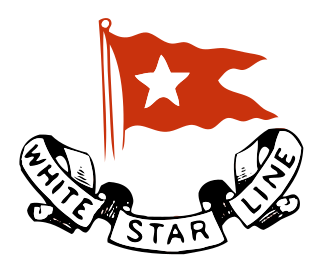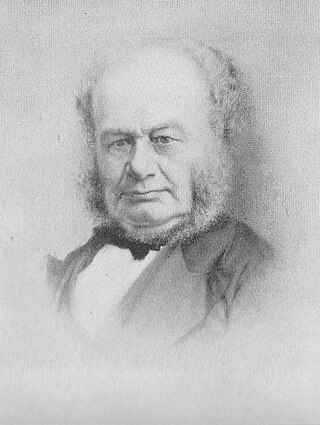Related Research Articles

Halewood is a town and civil parish in the Metropolitan Borough of Knowsley in Merseyside, England. It lies near the city of Liverpool's southeastern boundary, bordered by the suburbs of Netherley, Hunt's Cross and Woolton.

Aigburth is a suburb of Liverpool, England. Located to the south of the city, it is bordered by Dingle, Garston, Mossley Hill, and Toxteth.

The White Star Line was a British shipping line. Founded out of the remains of a defunct packet company, it gradually rose up to become one of the most prominent shipping companies in the world, providing passenger and cargo services between the British Empire and the United States. While many other shipping lines focused primarily on speed, White Star branded their services by focusing more on providing comfortable passages for both upper class travellers and immigrants.

Mossley Hill is a suburb of Liverpool and a Liverpool City Council ward. Located approximately 3.5 miles south east of Liverpool City Centre, it is bordered by Aigburth, Allerton, Childwall, Garston and Wavertree. At the 2001 Census, the population was 12,650, increasing to 13,816 at the 2011 Census.

St. Mary of the Angels is a former Roman Catholic church in Everton, Liverpool, built in 1907. It has magnificent interiors of marble, imported to bring Rome to Liverpool. The building of the church was funded by Amy Elizabeth Imrie, a Catholic convert and nun, who became an abbess of the Poor Clare Sisters. She was the heiress to the White Star Line shipping fortune when her uncle, William Imrie, died in 1906.

Thomas Henry Ismay was a one time owner the White Star Line. His son Joseph Bruce Ismay was managing director of the White Star Line and survived the maiden voyage of its ocean liner RMS Titanic in 1912.

The Church of St Clare is on the corner of Arundel Avenue and York Avenue in the Sefton Park area of Liverpool, Merseyside, England. It is recorded in the National Heritage List for England as a designated Grade I listed building, and is an active Roman Catholic parish church in the Archdiocese of Liverpool and the Pastoral Area of Liverpool South. It is the only Grade I listed Roman Catholic church in the Archdiocese of Liverpool. Sharples and Pollard consider it to be "one of the most imaginative churches of its date in the country".
Amy Elizabeth Imrie, was a British heiress and one of the wealthiest women in Britain who, at the age of 37, became a Roman Catholic nun, Sister Mary Clare and, subsequently, Mother Superior of the Order of Poor Clares.

The Church of St Matthew and St James stands on the top of a hill in Rose Lane, Mossley Hill, Liverpool, England. It is an active Anglican parish church in the deanery of Liverpool South Childwall, the archdeaconry of Liverpool and the diocese of Liverpool. Its benefice is united with those of All Hallows, Allerton, and St Barnabas, Mossley Hill. The church is recorded in the National Heritage List for England as a designated Grade II* listed building. The authors of the Buildings of England series describe it as "one of the best Victorian churches in Liverpool".

Joseph Bruce Ismay was an English businessman who served as chairman and managing director of the White Star Line. In 1912, he came to international attention as the highest-ranking White Star official to survive the sinking of the company's new flagship RMS Titanic, for which he was subject to severe criticism.

Albion House is a Grade II* listed building located in Liverpool, England. It was constructed between 1896 and 1898 and is positioned on the corner of James Street and The Strand across from the Pier Head.

Thurstaston is a village and former civil parish, in the Wirral district, in Merseyside, England, on the Wirral Peninsula. It is part of the West Kirby and Thurstaston Ward and the parliamentary constituency of Wirral West. The village lies on the A540 road between Heswall and Caldy, although it extends some distance down Station Road to the Wirral Way and the River Dee estuary.
Pollard is a surname. Notable people with the surname include:
Gustav Christian Schwabe was a German-born merchant and financier who funded companies such as John Bibby & Sons, Harland and Wolff and the White Star Line. Born in Hamburg, Germany, Schwabe moved to Liverpool in 1838 and spent his working life there. Later, Schwabe would spend more time at his house in London, and retired in 1893.
Imrie may refer to the following people:

George Philip (1800–1882) was a Scottish cartographer, map publisher and founder of the publishing house George Philip & Son Ltd.
Henry Gustave Hiller (1865–1946) was an artist based in Liverpool, England. He studied at the Manchester School of Art and is mainly known as a designer of painted gesso reliefs and stained glass.

The architecture of Liverpool is rooted in the city's development into a major port of the British Empire. It encompasses a variety of architectural styles of the past 300 years, while next to nothing remains of its medieval structures which would have dated back as far as the 13th century. Erected 1716–18, Bluecoat Chambers is supposed to be the oldest surviving building in central Liverpool.

John Melhuish Strudwick, was a British Pre-Raphaelite painter.

The Oceanic class were a group of six ocean liners built by Harland and Wolff at Belfast, for the White Star Line, for the transatlantic service. They were the company's first generation of steamships to serve the North Atlantic passenger trade, entering service between 1871 and 1872.
References
- ↑ "Death List of a Day" (PDF). nytimes.com. 8 August 1906. Retrieved 28 January 2024.